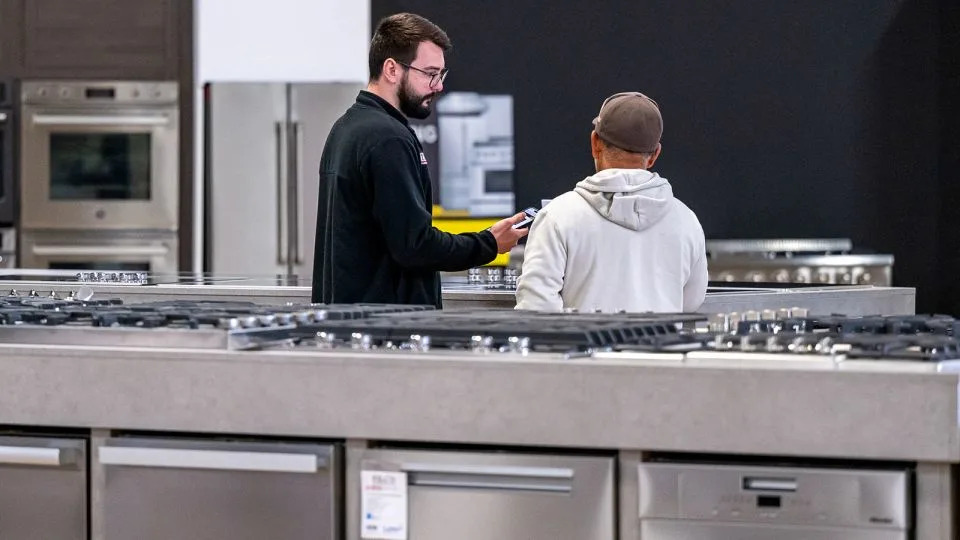News
Inflation slowed more than expected in April, despite tariff-related price pressures building

US inflation slowed to its lowest rate in more than four years, an unexpected and welcome development at a time when President Donald Trump’s dramatically escalated tariffs are expected to cause prices to rise.
Consumer prices rose 0.2% last month, bringing the annual inflation rate to 2.3%, an unexpectedly cooler reading than the 2.4% increase seen in March , according to the latest Consumer Price Index data released Tuesday by the Bureau of Labor Statistics.
It’s the lowest annual rate since February 2021.
However, what’s been a yearslong unwinding of post-pandemic inflation also isn’t expected to last.
“On its face, the numbers in the CPI report are good news for consumers: food prices being down, some air travel being slightly cheaper, things that people like to see in the economy,” said Tyler Schipper, associate professor in economics and data analysis at the University of St. Thomas in St. Paul, Minnesota. “Those tariffs are still out there, they’re still at levels that we have not seen in a very long time, and there are some good explanations for why we shouldn’t necessarily be seeing price increases yet.”
Among those reasons: There have been significant shifts in tariff policy, and some of the most aggressive duties were curtailed or paused; businesses front-loaded purchases, building up their pre-tariff inventory; and some costs from the initial waves of new tariffs might have been absorbed by retailers and manufacturers.
And as far as the inflation data is concerned, any tariff effects would likely first emerge in goods (where some categories did show price jumps); however, any increases there were offset by softer services inflation, including areas where weaker consumer demand might have weighed down prices.
“This may be the low point (for CPI) in 2025,” Ben Ayers, Nationwide senior economist, wrote in a note to investors on Tuesday. “As tariff costs increasingly flow into consumer prices, we expect a jump in the CPI this summer, pushing the annual reading back above 3%. Correspondingly, economic growth should be soft over the rest of the year as higher prices and economic concerns weigh on spending activity.”
And while tariff-related impacts were scant in Tuesday’s CPI data, not only were there some indications that price pressures may be building, but the report also showed signs of how massive economic uncertainty has weighed on consumers.
‘EggGate’ winds down while goods prices amp up
Economists expected that the CPI would rise 0.3% from March and hold steady at 2.4% for the 12 months ended in April, according to FactSet.
Consumers got some relief at the grocery store, where prices fell 0.4% from March, and that brought down overall food prices by 0.1%.
Egg prices sank 12.7% for the month, reflecting declines seen on the wholesale side as the industry starts to recover from a deadly bout of avian flu. The average price of a dozen Grade A eggs fell from $6.23 to $5.12, BLS data shows.
Annually, egg prices are up 49.3%.
“Maybe the worst of EggGate has passed,” Schipper told CNN Business.
Food and energy (which rose 0.7% from March) are two of the areas where consumers most frequently encounter inflation; however, they’re also the most volatile and affected by temporary events such as weather, war, disease, supply chain snarls, and demand swings.
The Core CPI gauge, which strips out food and energy, rose 0.2% from March and remained at an annual rate of 2.8%, according to Tuesday’s report.
Still, the report also showed the “first clear evidence of upward pressure” on goods prices from tariffs, noted Samuel Tombs, chief US economist for Pantheon Macroeconomics.
Prices for goods excluding food, energy and autos rose 0.2%, exceeding the past 12 months’ zero average, he wrote in a note to investors. Household furnishings and appliances leapt by 1%, and computer and telephone prices rose by 0.3%, a turnabout from a 0.6% average drop during the previous 12 months, he added.
Additionally, well-documented plunges in consumer confidence weighed on discretionary services prices last month, particularly for air transportation, which fell 2.8% in April after registering drops of 5.3% and 4% in March and February, respectively.
“The very low level on searches of Google for phrases including ‘flights’ in April … suggests that booking and prices will remain subdued in May,” he wrote.
This story is developing and will be updated.
For more CNN news and newsletters create an account at CNN.com

